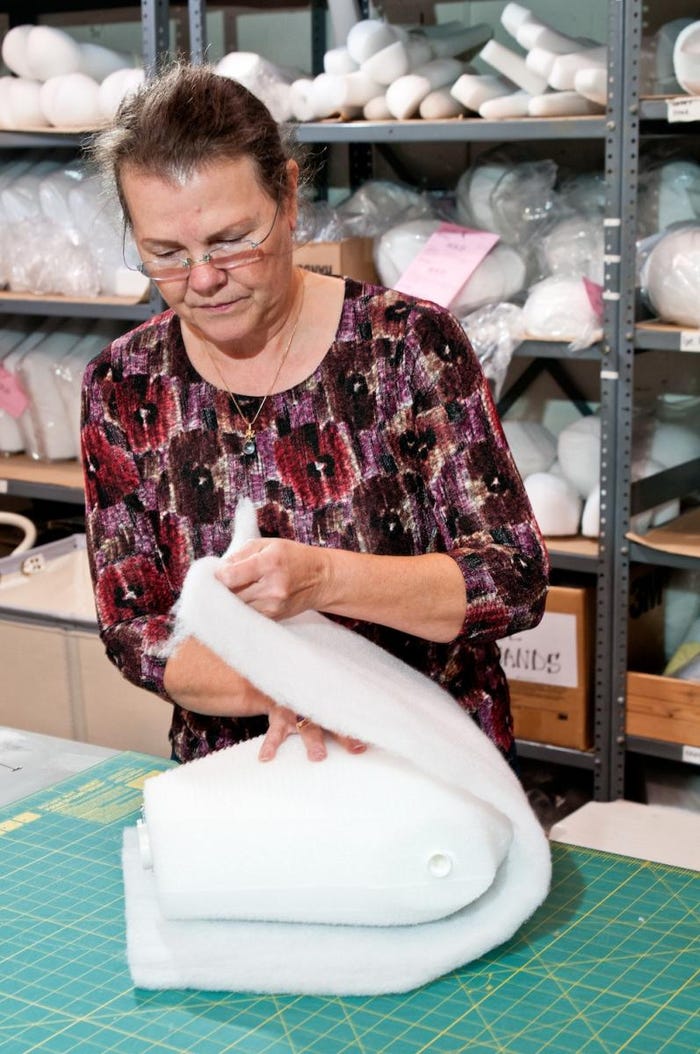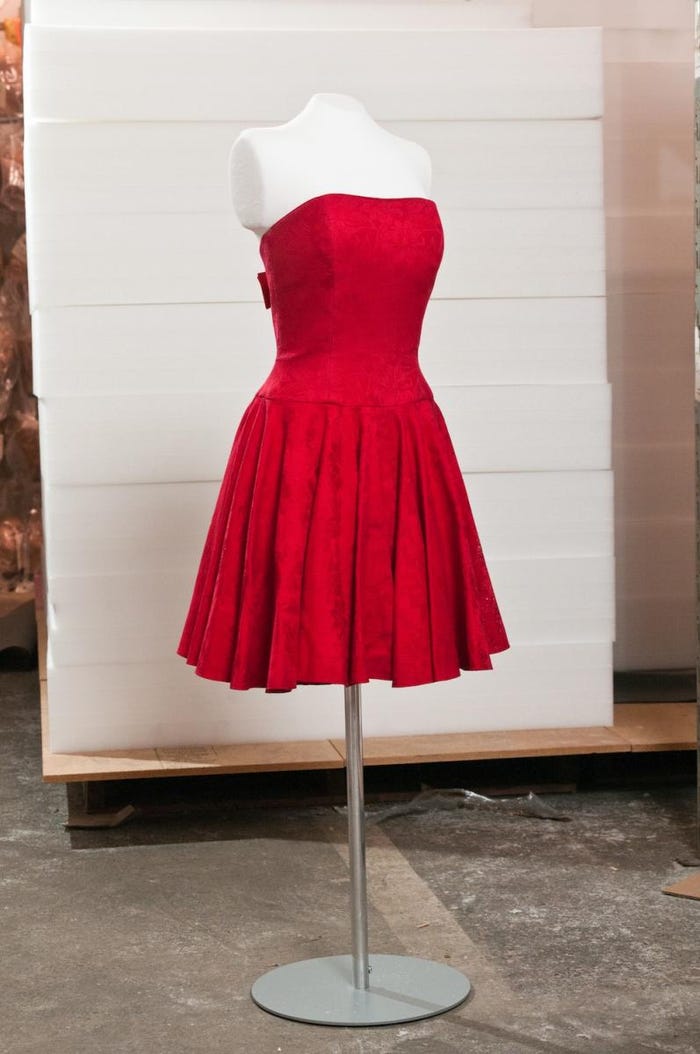Manufacturer of museum figures uses polyethylene foam to create conservationally sound forms
Lewis Smith, global product line director of Sealed Air specialty foams, told PlasticsToday that Sealed Air's extruded, closed-cell polyethylene Ethafoam is oftentimes used for packaging consumer goods.But he said the material isn't limited to just packaging.
September 10, 2013
Lewis Smith, global product line director of Sealed Air specialty foams, told PlasticsToday that Sealed Air's extruded, closed-cell polyethylene Ethafoam is oftentimes used for packaging consumer goods.
But he said the material isn't limited to just packaging.
Baltimore-based Dorfman Museum Figures Inc. manufactures realistic figures and conservation forms for museums and collectors. The conservation forms, mannequin-like figures made of non-corrosive materials, are safe for use with valuable artifacts such as clothing and accessories. While the business originally focused on the creation of life-like figures, Dorfman Museum Figures has offered its customers conservation forms and accessories made with Sealed Air Ethafoam polyethylene foam for more than 15 years.
 "Ethafoam polyethylene foam is recognized as a safe conservation material per industry testing standards, so to help our customers protect their high-valued artifacts, we use Ethafoam foam as the basis for all of our conservation forms and accessories," said Robert Dorfman, president of Dorfman Museum. "We got into this business because we received a request from a museum to make adjustable, conservationally sound forms. The museum told us they preferred to use Ethafoam material in their conservation figures, and we've been working with the material ever since."
"Ethafoam polyethylene foam is recognized as a safe conservation material per industry testing standards, so to help our customers protect their high-valued artifacts, we use Ethafoam foam as the basis for all of our conservation forms and accessories," said Robert Dorfman, president of Dorfman Museum. "We got into this business because we received a request from a museum to make adjustable, conservationally sound forms. The museum told us they preferred to use Ethafoam material in their conservation figures, and we've been working with the material ever since."
The forms themselves are made from planks of Sealed Air Ethafoam polyethylene foam provided by United Foam Products (UFP) foam fabricators, according to Sealed Air. These planks are fabricated into various thicknesses by UFP in a manner that allows Dorfman Museum's artists to create a rough cutting for the 10 different forms offered. These rough cuts are created using industrial equipment and finishing is then performed with the use of hand tools in order to carve and smooth the forms.
Additional padding that resembles quilting batting is added over this material. The form is covered in its entirety with a stretched covering of nylon or stockinet, a knitted polyester fabric, to create a smooth surface. Finally, appendages made from the same material, such as hands, arms and heads, are added, as well as aluminum poles and powder coated steel stands.
Dorfman said that his employees like the material because it's benign and safe to work with. The material has been tested with the Oddy test, a standard international test developed by scientist Andrew Oddy to detect whether materials emit chemicals or fumes, such as formaldehyde, that could react with and damage artifacts.
Closed loop recycling system
Smith said that the material is 100% recyclable. Sealed Air has implemented a closed loop recycling system and invested in collection systems that reclaim scrap polyethylene foam material from a network of fabricators and customers.
"The Sealed Air closed loop recycling system allows our company to reduce the amount of material that ends up in a landfill, while giving Sealed Air greater control over the sourcing and quality of our materials," he said. "Creation of such a system represents a substantial sustainability commitment and highlights our dedication to reduce the overall environmental impact through our products' life cycles."
environmental impact through our products' life cycles."
The Sealed Air closed loop recycling system enables Dorfman Museum Figures to participate in the recycling of Ethafoam materials by saving scrap foam for pick up by Sealed Air.
"We have our scrap foam picked up for recycling by Sealed Air every four to six weeks," Dorfman said. "We can have anywhere from 50 to 100, 55-gallon bags ready for Sealed Air to recycle, I just call Sealed Air and they route a truck this way and we toss it on to the truck. We're happy to do this primarily because it reduces our environmental impact, but the Sealed Air closed loop recycling system also results in some cost savings for our waste management."
The recycled resin produced from Sealed Air's closed loop recycling system is used to manufacture Ethafoam MRC and HRC and Stratocell RC recycled resin content foams.
As Dorfman Museum Figures continues to grow and supply their customers with conservationally sound forms, Dorfman says he plans to continue to work with Ethafoam material.
"Using Ethafoam material for our forms has opened our business up to additional customers because they trust that our products are safe for their valuables," Dorfman said.
About the Author(s)
You May Also Like


